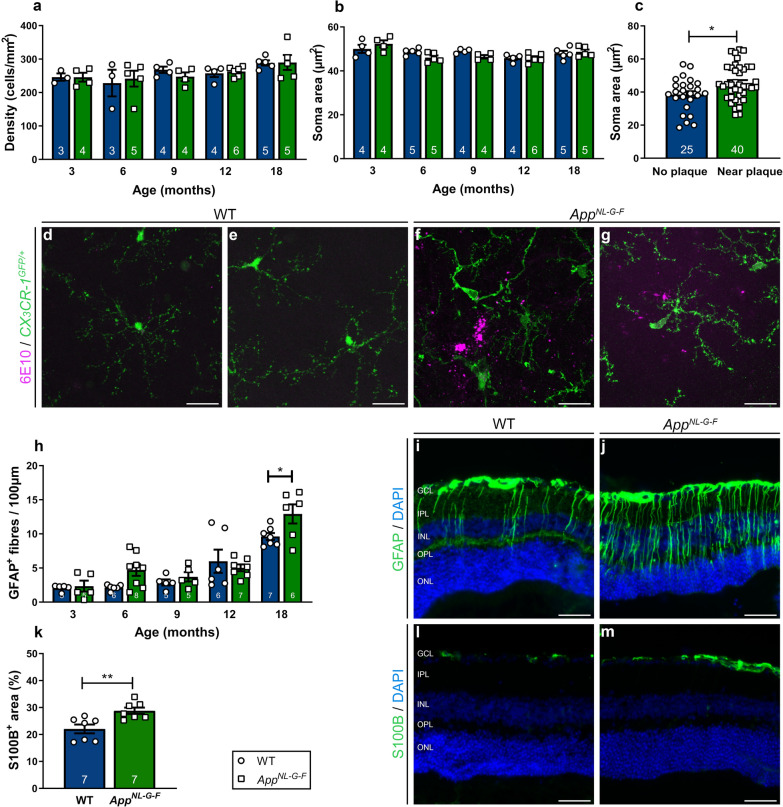Fig. 4.
Locally reactivated microglia and macrogliosis in the retinas of aged AppNL-G-F mice. a, b Quantification of microglial density (a) and soma area (b) on Iba1-labeled retinal wholemounts of 3- to 18-month-old AppNL-G-F and WT mice reveals no differences between genotypes when analyzed for the entire retina. An effect of aging was observed for microglia density (Two-way ANOVA, F4,33 = 2.976, p = 0.0334); n = 3–6. c Morphometric analysis of plaque-associated microglia versus microglia distant from Aβ plaques in 18-month-old AppNL-G-F x CX3CR-1GFP/+ retinas reveals that plaque-associated microglia have a larger soma, which is indicative of their activation. Unpaired two-tailed t-test (t63 = 2.614, p = 0.0112); n = 2–40 cells from 6 mice. d–g Representative images of immunostaining for Aβ (6E10) on retinal wholemounts of 18-month-old CX3CR-1GFP/+ (d–e) and AppNL-G-F x CX3CR-1GFP/+ mice (f–g), illustrating that green fluorescent microglia surrounding Aβ plaques display morphological alterations typical for reactive microglia, with thicker and less ramified processes and a larger soma. h Counting the number of GFAP+ radial fibers on retinal sections of AppNL-G-F and WT mice shows that macrogliosis increases with age, and significantly differs between genotypes at 18 months. Two-way ANOVA with Sidak’s multiple comparisons test (F4,50 = 34.02 for the effect of age, F1,50 = 4.411 for the effect of genotype, p = 0.0432); n = 5–8. i–j Representative images of a GFAP immunostaining on retinal cross-sections of 18-month-old WT (i) and AppNL-G-F (j) mice. k Quantification of the S100B immunopositive area on retinal sections of 18-month-old AppNL-G-F and WT mice shows astrogliosis in the AppNL-G-F retina. Unpaired two-tailed t-test (t12 = 3.358, p = 0.0057); n = 7. (l-m) Representative images of the S100B immunostaining on WT (l) and AppNL-G-F (m) retinas. Scalebar (d–g): 20 µm, scalebar (i, j, l, m): 50 µm. Data are shown as mean ± SEM. GCL = ganglion cell layer, IPL = inner plexiform layer, INL = inner nuclear layer, OPL = outer plexiform layer, ONL = outer nuclear layer

